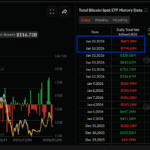
(Gentlemen, subterfuge is needed. -AM)
By Liz Capo McCormick
Sept. 22 (Bloomberg) -- The Federal Reserve has started talks with bond dealers about withdrawing the unprecedented amount of cash injected into the financial system the last two years, according to people with knowledge of the discussions.
Central bank officials are discussing plans to use so- called reverse repurchase agreements to drain some of the $1 trillion they pumped into the economy, said the people, who declined to be identified because the talks are private. That’s where the Fed sells securities to its 18 primary dealers for a specific period, temporarily decreasing the amount of money available in the banking system.
There’s no sense that policy makers intend to withdraw funds anytime soon, said the people.
(Of course they wouldn't comment without that disclaimer, move along nothing to see here. But get the message out ... -AM)
The central bank’s challenge is to decrease the cash without stunting the economy’s recovery and before it sparks inflation. Fed Chairman Ben S. Bernanke said in a July Wall Street Journal opinion article that reverse repos are one tool to accomplish that goal without raising interest rates.
(They want a controlled burn so that the markets retrench slowly but far enough so future consensus for more reflation can be found and if they can hit the sweet spot and just level if off well ... flat beer for everyone! ... -AM)
“One thing the Fed has to figure out is if they can launch pilot programs without spooking the market and creating the perception that they are about to tighten,” said Louis Crandall, chief economist at Wrightson ICAP LLC, a Jersey City, New Jersey-based research firm that specializes in government finance. “They are discussing things like accounting issues, and updating the governing documents to the volume of reverse repos the dealer community could absorb.”
“To be effective, the Fed would have to drain several hundred billion dollars worth of funds through these reverse repos, between about $400 and $600 billion,” said Joseph Abate, a money market strategist in New York at Barclays Plc, a primary dealer. “You may have a dislocation in the repo markets due to the supply effect of the Fed injecting such a large amount of extra collateral into the marketplace.”
“The timing is not now for the exit strategies to begin,” said Tony Crescenzi, a market strategist and portfolio manager at Newport Beach, California-based Pacific Investment Management Co., manager of the world’s biggest bond fund. Talk of exit strategies “will all seem very preliminary and conditional upon evidence that the economy is moving toward a self-sustaining and self-reinforcing condition. The proof of that will be some improvement in the labor market picture,” he said.
When the Fed does begin, “it will use reverse repos in tandem with other draining operations,” said George Goncalves, chief fixed-income rates strategist in New York at Cantor Fitzgerald LP, a primary dealer. “The Fed won’t want to totally disrupt the repo markets and the short-term financing of Treasuries given how much debt is coming to market."



No comments:
Post a Comment